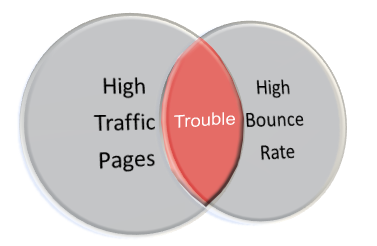

Models and Conversion Points
A good place to start would be your model – the online optimization modellooks at the long-term value of your relationship with your customers rather than just the quick conversions, taking into account your visitor acquisition, conversion, and retention success.
Once you have a model, you need to understand the different kinds of landing pages you have, and the different types of conversions they are part of. Yes, there are many.You need to find the values for definite conversions like:
1. Sales
2. Subscriptions
3. Leads
4. E-mail sign-ups
You also need to keep track of the discovery/branding aspect, noting considerations like:
1. Education
2. Key downloads
The early funnel items can get visitors to return, and are tougher to measure, but assigning values to early stage actions like downloads and visitor return rate, mid-stage actions like sign-ups, and late stage actions like sales and upsells will go a long way in providing the complete picture.
Elements to Tune and Data Collection
If you want to get the most out of testing, you first need to know where you are losing the most business. Now, if this is your first test, you may not want to touch the page with the highest traffic first, as you may need a few successes under your belt before your company allows for that. But the guidelines are pretty basic – you need to find the trouble areas:
Once you’ve found the high traffic pages with high bounce rates, you need to think about the users of those pages, as well as whether or not the traffic for the pages are controllable and stable (pages that largely cater to email subscriptions, seasonal offers and other less controllable areas tend to produce inconclusive results).
If you can, try and figure out where visitors are in the decision process for the trouble areas (AIDA – Attention, Interest, Desire, Actions)– it may be easier to come up with solutions to leaky buckets. Likewise, it’s good to know what areas you do not need to tune.
Defining Success
To know whether a test has been successful or not, you need to determine a few things:
1. Bandwidth
a. Low – assign up to a quarter of the traffic to the “champion” page when you have a high data rate and are running a multivariate test
b. Medium – assign half the traffic to the “champion” page, and the other half to the “challenger” page when running an A/B split test
c. High – for conservative tests, devote most of the traffic to the “champion” page to avoid hurting the bottomline while the test is running
2. Conversion Action
a. What are your conversion points?
b. Do the conversion points have the same value?
c. Should you use revenue or profit per visitor as the key performance indicator?
3. Confidence Level
a. Low (90-95%) – for lower data rates
b. High (95-99%) – for pages with significant business value, higher data rates (for A/B split tests, computing at 95% confidence is easy to automate)
With the model identified, success measures pinned down, and key areas to test found, your next move is to build the test plan.
Getting the Test Plan Right
The test plan has a few basic components:
1. Overview – an executive summary for those who may not have the time to read everything
2. Constraints – known areas that cannot be changed
3. Variables and Values – the number of branching factors and total number of recipes or potential combinations
4. Actions and Value – conversions, revenue, and profit
5. Implementation and QA Notes – steps and pitfalls for the execution and quality assurance teams
And that’s it. When you have your plan, get buy-in from the right people. Remember that even for well thought-out tests, there’s a ceiling for the absolute number of conversions. Report your findings with the appropriate confidence level and make sure your success is documented, so it gets easier and easier to get buy-in for the next round of tests.
Next: “Debunk Myths and Get Testing.” SiteTuners will cover the common testing pitfalls.



